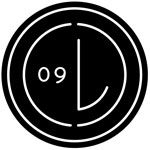Why is Pixar’s offices filled with small wooden cabins and caves as the designers sitting in? Why has the Swiss office of Google a slide that goes from one floor to another? We do this because we believe that perhaps playfulness is important. We believe that playfulness helps us to come up with better creative solutions. Helps us do a better job. And helps us feel better when we do the job.
My MA project is about how I can use playfulness and interaction to involve the users in the use of a product? (still working on this one ;))
For whom?
For whom do I write this MA degree? Most books and texts are structured in a certain way to reach out to its audience. I have several audiences in mind when I write this text, and it will therefore be a potential that I’m not able to satisfy all. But let me explain who I think may find this task interesting to read through.
A key audience is the students that I hope through my work see the value of play as a tool in a work process. It’s important to work hard to achieve their own goals, but at the same time play to find joy in what you do.
Another important group of individuals are professionals who can relate their work to human development, psychology, education, conduct research or simply people who are interested in studying play and interaction and is fascinated by this theme.
If this text can open up for more work and deeper exploration and understanding of this theme has all the hard work through two years not been wasted. Of course I will take with me that I personally have learned through research on interaction and play.
Start
My journey to try to understand play began in the summer of 2009 when I took up a fistful of wet sand and showed it to my 2 year old niece, Luna, while we was swimming in the sea. The reaction that followed was both expected and unexpected at the same time. We have always shown children things because you know how curious children are. But this spontaneous happiness that embraced little Luna when she got the wet sand in his hand, was far above my expectations. I got a glimpse of how parents have it when they re-experience the first impression of nature over again through their own children. For a few minutes she was totally engrossed in this phenomenon, which she obviously had never seen or felt before. She screamed for joy every time, and made me see the beauty of this «not so special thing».
I still believe we are fascinated by many of the gifts nature gives us every day, but we have learned not to make so much out of it. Everyone knows it’s there, and they have experienced it many times. As we grow up to become responsible adults, we forget to see the world as we did when we still had a learning curve that shot up.
Who is not impressed over and over again by a beautiful sunrise or sunset, the first snow or waking up to seagulls on a warm summer? Every day there are events that constantly surprises and impresses us, but there are children who have to teach adults to express what you feel again. It is only when one sees children’s enthusiasm that they appreciate being childish again.
Adults must learn to see the value in play, be exploratory and playful. When children come across something new they ask themselves: «What is it?». But they also say: «What can I do with it?». Aluminum foil can easily become a spacesuits. And a classic example is how the children often find the box is more interesting than the actual toy. We’ve all heard it before, but it is still interesting because it is obvious that we can do much more with a box than a toy. When we become adults we tend to forget, and we must learn again.
The hand
One thing that fascinate me is texture and surfaces. I want to make products where people can use their hands to interact with a surface to give the product a function. Using your hands to learn turns out to be more important than previously believed.
JPL, NASA and Boeing does not employ people to development and problem areas, even from Harvard etc, if they have not worked with her hands. Everything from fixing cars to only have made things with them. This is the experience you need to solve problems. If you haven’t played with your hands you can’t solve future challenges as well. Play is practical, and very important.
This way of learning through their given senses are indescribably valuable. Children learn through touching, tasting and playing with everything that surrounds them.
This was for me inspiring and led me into this path where I want to, together with others, people to have a greater focus on the value of play as a learning form. Is there anything that makes you happy, repeat it! Have fun when learning, and you will continue pursuing it for its own sake. For example, the playful movement; to jump up in the air, is a lesson on gravity, as well as about his own body. That is how nature assures us how to learn about the world and our place in it.
Deadline
Only 4 months till my Masterprojects has to be finnished… And I need to come up with a good product that visualize my project.
BTW: check out this book by Stuart Brown















